How to Read Food Labels
Nutrition labels on food products can help you understand how much of a particular nutrient a product contains. Understanding how to read these labels can help you identify healthier foods and find out which products to avoid. 5-Minute Crafts is ready to teach you how to interpret these numbers and codes and make better nutrition choices.
I. How to understand nutrition label information:
1. Front-of-package black-and-white nutrition labels
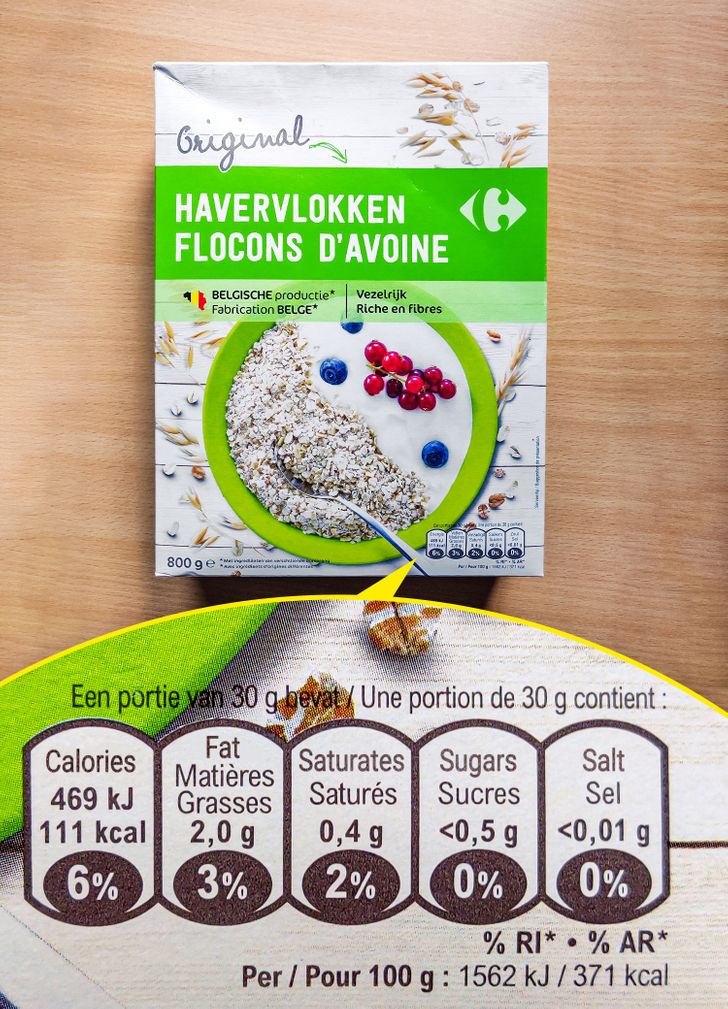
On the front of many packages, you can find black-and-white labels that indicate energy, as well as fat, saturates, sugars, and salt. They are known as Guideline Daily Amounts (GDA) and are used for information about the average amount of calories and nutrients that people need daily. The label also shows the percentage of the daily recommended amount of these nutrients in a portion of the product.
- Calories — This icon represents the amount of energy that the product provides. Your body needs this energy to function normally.
- Fat — This icon shows how much total fat (both saturated and unsaturated) the portion contains.
- Saturates — This icon shows how much total saturated fat the portion contains. Eating too much saturated fats can increase LDL (“bad”) cholesterol in your organism. It’s recommended to eat them in moderation and try to replace them with unsaturated fats.
- Sugars — This icon shows how much total sugar the portion contains. Some products might contain added sugars, like refined sugar. Other products might have naturally occurring sugars from fruits, fruit juices, and milk.
- Salt — This icon shows the total amount of salt in the portion. Some labels can also use “sodium” instead of “salt.”
2. Front-of-package colorful nutrition labels
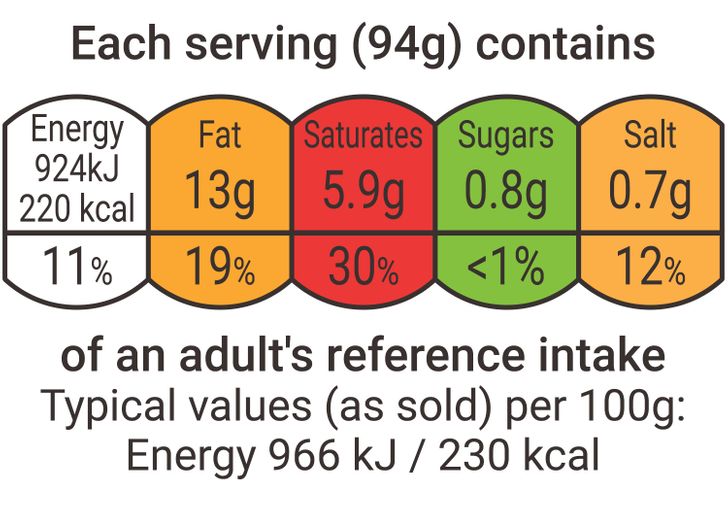
Some of the Guideline Daily Amounts can have color codes like red, amber, or green. They provide consumers with a better understanding of how much of the nutrient per 100 grams/100 ml the product contains.
- Red — The amount of the nutrient is HIGH.
- Amber — The amount of the nutrient is MEDIUM.
- Green — The amount of the nutrient is LOW.
- Neutral — Energy information should always be shown on a background with no color.
3. Nutrition facts on the back or side of a package
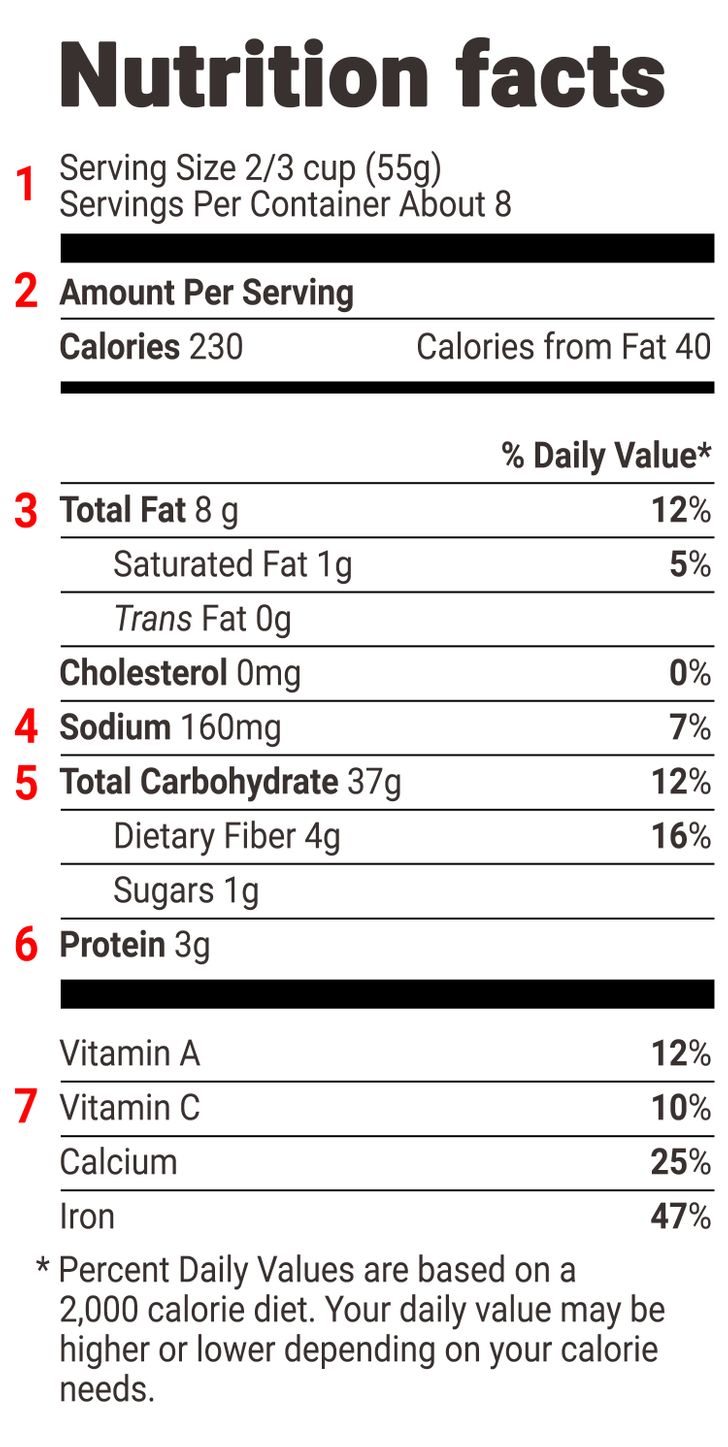
On the back of a product package, you can usually find a panel or grid with more extended information about the nutrition of a particular product.
1. Serving size — It tells you the amount people typically eat or drink. However, it’s not the recommendation of how much you should consume. All the nutrition information under this will refer to this serving size.
2. Calories — It tells you how many calories per serving the product contains.
3. Total fat — It tells you how many grams of all fats (saturated and unsaturated) one serving contains.
- Saturated fat — It tells you how many grams of saturated fat one serving contains.
- Trans fat — They are a form of unsaturated fats and are considered very unhealthy, as they can bring serious health problems.
4. Salt (sodium) — It tells you how many grams of salt (sodium) one serving contains.
5. Total carbohydrate — It tells you how many grams of all carbohydrates one serving contains.
- Dietary fiber — It’s a part of total carbohydrates. Mainly found in fruits, vegetables, whole grains, and legumes. This element is essential for your body as it promotes good health.
- Total sugars — Also a part of total carbohydrates. It tells you how much added and/or naturally occurring sugars the serving contains.
6. Protein — It tells you how many grams of all protein one serving contains.
7. Vitamins — If the product is enriched with vitamins, then the label will tell you their exact names and provide daily value percentages for each.
II. How to understand Nutri-Score:
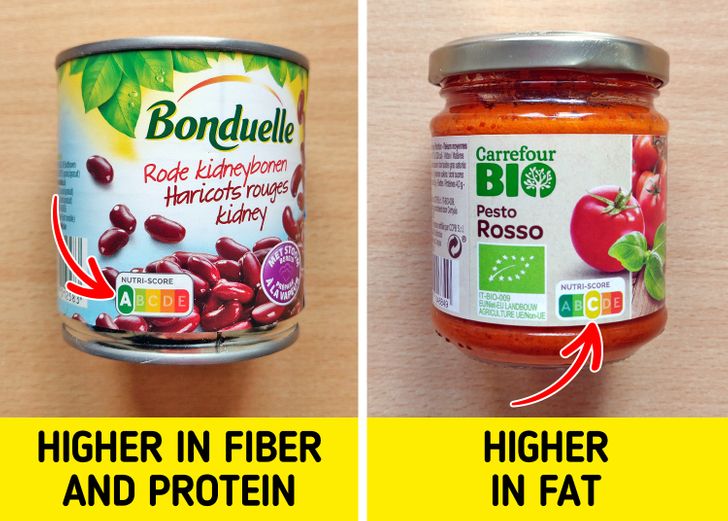
Nutri-Score (also called 5-Colour Nutrition Label) is an easy-to-understand chart where the nutrition value is given its own code and color. The products are awarded a special score, which is calculated according to a scientific algorithm. When calculating the score, nutrients to avoid (like amounts of sugar, saturated fats, and salt) and healthy elements (like the amount of fiber, protein, fruit, vegetables, nuts, and healthy oils) are taken into account.
So, if the product contains a high number of healthy elements per 100 gr or 100 ml, it will get a higher Nutri-Score. Those products that contain a lot of saturated fats, sugars, and salt usually get a lower score. The scores are also marked with their respective color, ranging from the best nutritional quality (green for A) to the lowest (dark orange for E).
III. What are the requirements for the daily intake?
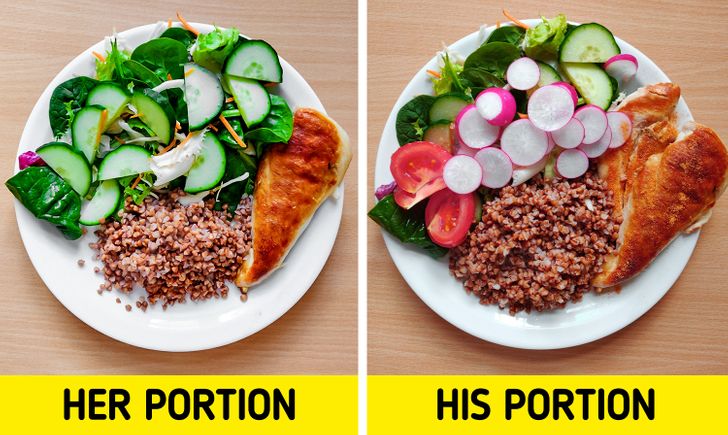
It’s important to understand that the requirements for the daily intake of calories and nutrients can vary depending on one’s sex, age, weight, and lifestyle. Thus, the Guideline Daily Amounts should not be used as a target, but just as an average reference for healthy adults. Usually, the standard guidelines are as follows:
- Calories — 2,000 kcal for an average woman, and 2,500 kcal for an average man
- Carbohydrates — 260 g
- Protein — 50 g
- Fat — 70 g
- Saturates — 20 g
- Sodium (salt) — 2.4g (6g)